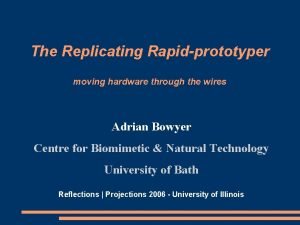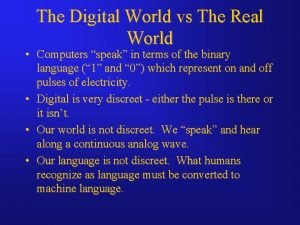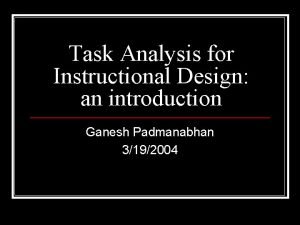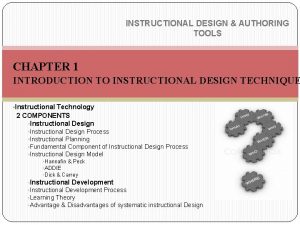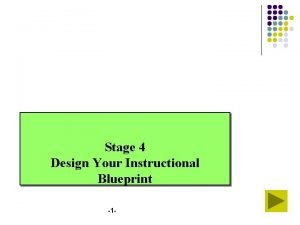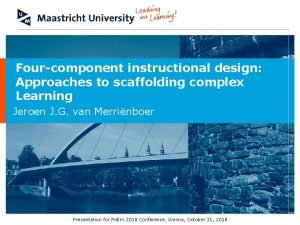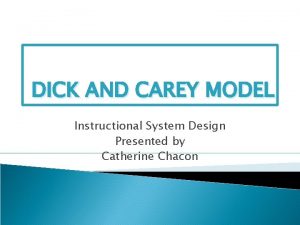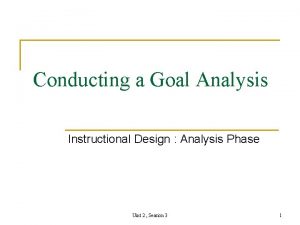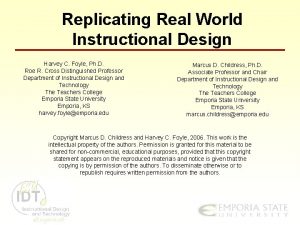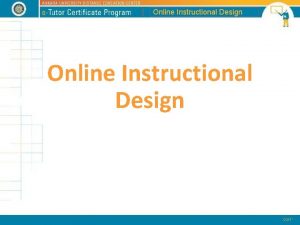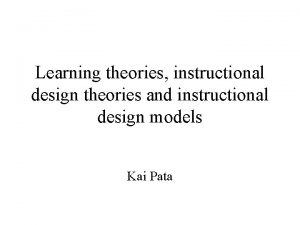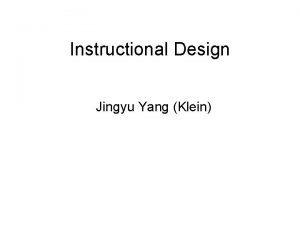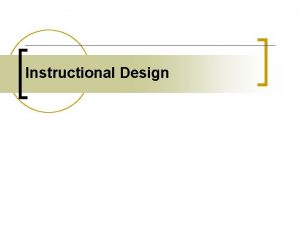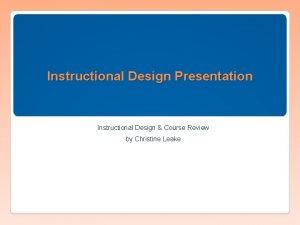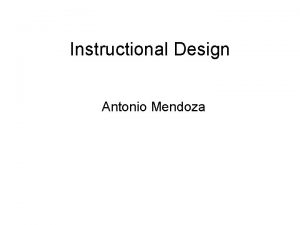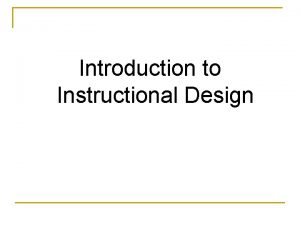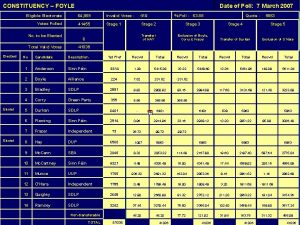Replicating Real World Instructional Design Harvey C Foyle


















- Slides: 18

Replicating Real World Instructional Design Harvey C. Foyle, Ph. D. Roe R. Cross Distinguished Professor Department of Instructional Design and Technology The Teachers College Emporia State University Emporia, KS harvey. foyle@emporia. edu Marcus D. Childress, Ph. D. Associate Professor and Chair Department of Instructional Design and Technology The Teachers College Emporia State University Emporia, KS marcus. childress@emporia. edu Copyright Marcus D. Childress and Harvey C. Foyle, 2006. This work is the intellectual property of the authors. Permission is granted for this material to be shared for non-commercial, educational purposes, provided that this copyright statement appears on the reproduced materials and notice is given that the copying is by permission of the authors. To disseminate otherwise or to republish requires written permission from the authors.

Replicating Real World Instructional Design

Presenters Harvey C. Foyle, Ph. D. Roe R. Cross Distinguished Professor Department of Instructional Design and Technology The Teachers College Emporia State University Emporia, KS harvey. foyle@emporia. edu Marcus D. Childress, Ph. D. Associate Professor and Chair Department of Instructional Design and Technology The Teachers College Emporia State University Emporia, KS marcus. childress@emporia. edu

Emporia State University - History

Emporia State University - History 1863 Kansas State Normal School (KSN) – First graduating class of 2 (1867) 1923 Kansas State Teachers College (KSTC) 1974 Emporia Kansas State College (EKSC) 1977 Emporia State University (ESU)

Emporia State University - Today

About ESU Instructional Design and Technology • Department formed in 1996 (5 students) • Preservice instructional technology courses for P-12 education majors • Master of Science in Instructional Design and Technology • The only Instructional Design and Technology Master of Science degree in Kansas • Entirely online: 2000 • Currently admitted to the MS program: 170

Geographic Distribution of Students

Ten web-based teaching strategies (Oliver, 2002) 1. 2. 3. 4. 5. 6. 7. Conversing, Discussing Mentoring, Questioning, Supporting a Partner Debating Impersonating, Role Playing Sharing Data, Analyzing Developing a New Product or Artifact Traveling Virtually, Situating Curriculum in the Context of Expeditions 8. Seeking, Collecting, Organizing, Synthesizing Online Information (Research) 9. Exploring Real World Cases and Problems 10. Accessing Tutorials with Exercises, Quizzes, Questions, Online Drill-and-Practice

Taxonomies Bloom’s Taxonomy Krathwohl’s Taxonomy

Ten web-based teaching strategies (Oliver, 2002) 1. 2. 3. 4. 5. 6. 7. Conversing, Discussing Mentoring, Questioning, Supporting a Partner Debating Impersonating, Role Playing Sharing Data, Analyzing Developing a New Product or Artifact Traveling Virtually, Situating Curriculum in the Context of Expeditions 8. Seeking, Collecting, Organizing, Synthesizing Online Information (Research) 9. Exploring Real World Cases and Problems 10. Accessing Tutorials with Exercises, Quizzes, Questions, Online Drill-and-Practice

Taxonomies – Real World Cases Bloom’s Taxonomy Krathwohl’s Taxonomy

Features of an Effective Case Study (Smith, 1999) 1. a context-based, relevant and relatively realistic scenario 2. a challenging but not too frustrating problem, task, or situation 3. a somewhat open-ended problem or situation that requires careful formulation and listing of assumptions 4. a problem or situation that motivates students to explore, investigate, and study 5. a problem or situation that encourages or requires interaction among students, between students and faculty, between students and outside resources 6. a problem that requires addressing the integration of broader aspects, including technical, economic, social, ethical, and environmental.

Three Principles of Effective Online Pedagogy (Pelz, 2004) 1. Let the students do (most of) the work. 2. Interactivity is the heart and soul of effective asynchronous learning. 3. Strive for presence.

What is Instructional Design? Instructional design is a system of procedures for developing education and training programs in a consistent and reliable fashion. (Reiser & Dempsey, 2002, p. 17)

The ADDIE Instructional Design Model

IT 800 – Instructional Design • Group formative case analyses • Individual final exam • Final group project case analysis

References Oliver, K. (2002). Web-based instruction. Retrieved February 20, 2006, from http: //www. edtech. vt. edu/edtech/id/wbi/index. html Pelz, B. (2004). (My) three principles of effective online pedagogy. Journal of Asynchronous Learning Networks, 8(3). Retrieved February 20, 2006, from http: //www. sloan-c. org/publications/jaln/v 8 n 3/index. asp Reiser, R. & Dempsey, J. (Eds. ). (2001). Trends and issues in instructional design and technology. Englewood Cliffs, NJ: Prentice Hall. Smith, K. (1999). Characteristics of an effective case study. Retrieved February 20, 2006, from www. nscc. edu/seatec/pages_resources/forum_papers_pdf/smith. pdf
 Replicating rapid prototyper
Replicating rapid prototyper Ltcm wikipedia
Ltcm wikipedia When do you use polynomials in real life
When do you use polynomials in real life Real world vs digital world
Real world vs digital world What is world of forms
What is world of forms Task analysis instructional design
Task analysis instructional design Diamond model of curriculum development
Diamond model of curriculum development Instructional design authoring tools
Instructional design authoring tools Dynamic instructional design model
Dynamic instructional design model What is assure model
What is assure model Instructional design blueprint template
Instructional design blueprint template öğretim tasarımı modelleri
öğretim tasarımı modelleri Jerrold kemp
Jerrold kemp Scaffolding instructional design
Scaffolding instructional design Dick and carey model
Dick and carey model Goal analysis instructional design
Goal analysis instructional design Assure model instructional design
Assure model instructional design Gagne 9 events of instruction
Gagne 9 events of instruction Katie conley model
Katie conley model
